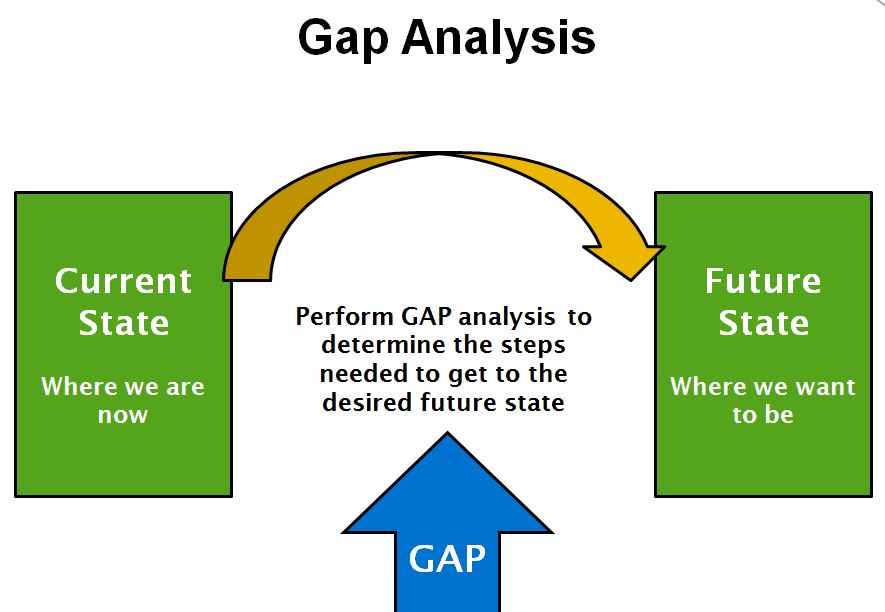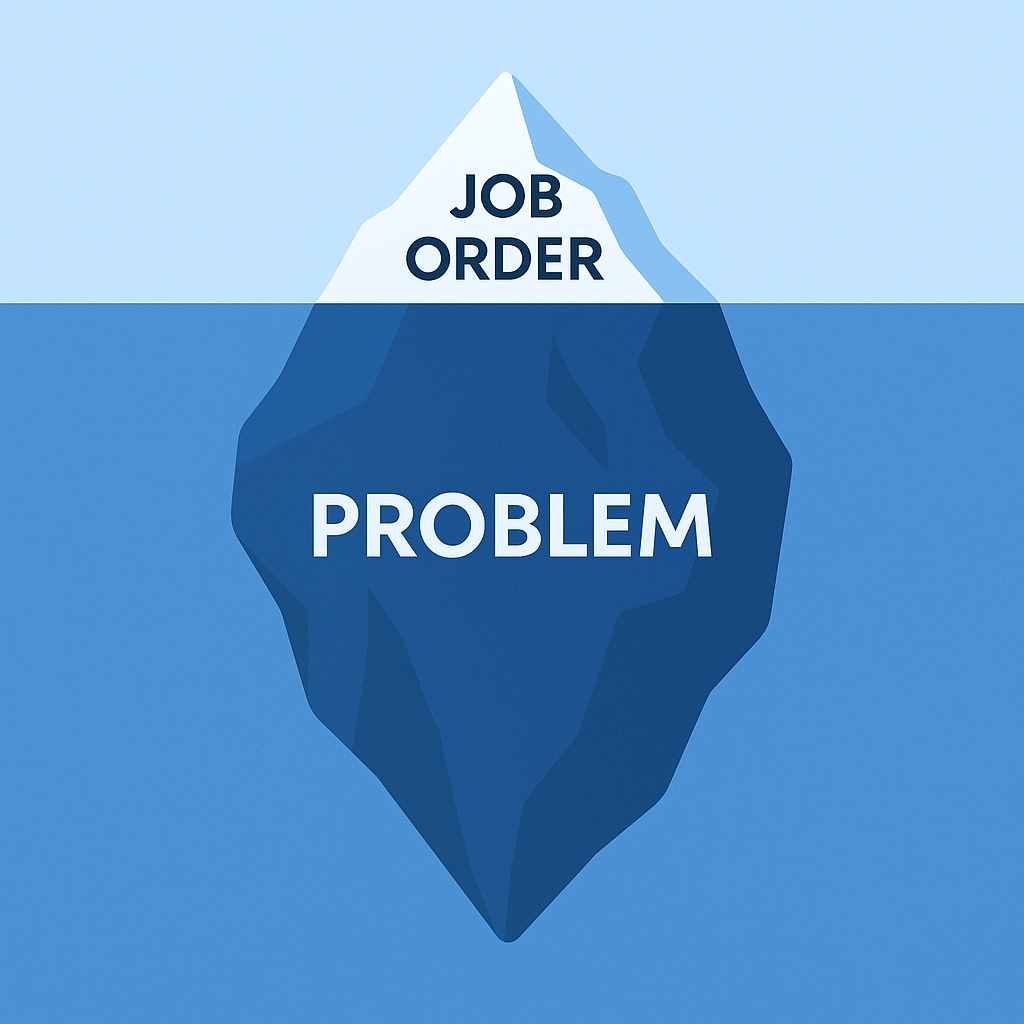Selling With Your Consultant
In my previous post, How to Prevent Unexpected Contract Terminations, I shared how systemizing consultant and client check-ins at key milestones...

Staffing owners and CEO's face non-stop pressure to deliver above-market growth during the best of times. When the economy is weak, that demand grows even stronger. While mergers and acquisitions have the ability to generate growth, the fact remains that consistently beating the market requires more than that. It takes superior internal capabilities, especially in sales and recruiting. Hiring and developing talent is a key component, but in my experience, being a market leader requires a true commitment to leading organizational change.
It takes superior internal capabilities, especially in sales and recruiting. Hiring and developing talent is a key component, but in my experience, being a market leader requires a true commitment to leading organizational change.
While most staffing companies understand the need to evolve and adapt to the marketplace, many struggle with mustering up the courage and vision and leadership skills to lead their business through an organizational transformation effort to achieve scalable and repeatable revenue growth and become a market leader. Commitment to change and having the courage to lead a sales transformation initiative by staffing organizations is critically important because of something that I observe more and more often in the marketplace: competitive advantage is of the slimmest of margins and simply doesn’t last very long.
Being a market leader means having an agile organization that is constantly innovating, creating, identifying and responding to new opportunities, and evolving with the customer. Doing these things requires a healthy appetite for change.
Even if the case for change is clear, how to do it is less certain. How do market leaders do it? How have market leading staffing firms successfully evolved and transformed their sales and delivery organizations where others have failed? My experience in leading dozens of sales transformations over the past six years has taught me that the recipe for success is broken down into the following six components.
Below I share with you six steps to leading sales transformation.
1. Define Your Current State (where are you today) and Your Desired Future State (where you're going)
To begin, you need to create a compelling case for change. You need to define the problem your organization is trying to solve and why your "current state" is not good enough. Keep in mind that your vision for your desired future state should be supported with factual data and not supported exclusively on hunches or gut instinct.
Having worked with hundreds of staffing companies I've come to discover that most don't have a strong sense for their true sales and delivery capabilities. Market leading staffing firms on the other hand systematically assess and evaluate their capabilities and effectiveness at a granular level and on a consistent basis. This is what allows their executives to make insightful business decisions. These market leaders are deliberate about identifying their strengths and weaknesses against all capabilities and then mapping them against their goals so they understand which capabilities to prioritize. Everyone in the C-suite can articulate what two or three sales and recruiting capabilities their organization is focused on enhancing and how they are building them, and how well the capability-building effort is translating into results. This is why market leaders embrace change and are constantly evolving; they're looking at the data and pushing to improve their capabilities and effectiveness while the rest of the market is simply applying the "do more" approach. Perhaps you remember this story that Stephen Covey shared with us.
A man was walking through a forest when he came across a frustrated lumberjack. The lumberjack was trying to cut down a tree and was swearing and cursing as he labored in vain. “What’s the problem?” The man asked. “My saw’s blunt won’t cut the tree properly.” The lumberjack responded. “Why don’t you just sharpen it?”
“Because then I would have to stop sawing.” Said the lumberjack. “But if you sharpened your saw, you could cut more efficiently and effectively than before.” “But I don’t have time to stop!” The lumberjack retorted, getting more frustrated.
The man shook his head and kept on walking, leaving the lumberjack to his pointless frustration.
The point of the story of course is that market leaders take the time to stop and sharpen their saw. They're not afraid of change. In fact, they embrace it. By "sharpening their saw," market leaders facilitate multi-day workshops to distill their vision into goals and objectives including timelines that can be filtered down from the leadership team and out into the field. Connecting a visionary goal with a clear time line creates momentum to start the transformation. This is how they define their path from current state to desired future state and communicate their plan to the organization.
2. Create a Leadership Transformation Team
After defining your current state and your desired future state, the next stage is to create a leadership transformation team. While it is ideally led by the CEO, the head of sales and/or recruiting, or the CMO or COO , the team should include key members from marketing, sales, recruiting, and operations. Team members need to be respected—their day-to-day colleagues should feel they can’t afford to lose them. It is also important to include HR along with a project manager who keeps everyone focused on the next step and tracks progress.
Because sales transformation is a long process (several months to multiple years) and involves taking risks, the team must invest in building deep levels of trust to ensure everyone's voice is heard at the executive round table and that change sticks. Research from McKinsey shows that 63 percent of successful transformations balance team health with performance. Activities to build trust should focus on learning what makes each person tick, understanding motivations, and identifying attitudes and perceptions toward change and risk. Genuine trust within the leadership transformation team cannot be understated.
3. Get Some Quick Wins
Transformations don’t succeed unless they deliver substantive wins within 6 to 12 months. That’s why market leaders build momentum by focusing first on initiatives that have early impact—and help fund the transformation—then on building a case for additional change efforts. The point is, through small, little wins you want to prove to your field organization (sales and recruiting) that you can achieve your sales transformation goals with minimal disruption. Focus on getting some quick wins along your journey.
4. Leading Your Plan for Change
The leadership transformation team has to devise a change management plan for pushing change throughout the organization. This requires a clear vision for building new work habits and behaviors at every level. For the CEO, it’s about shifting mind-sets and developing new leadership and change-management skills. For managers, the focus needs to be on developmental coaching, product knowledge, and problem solving. You can’t do everything at once, so the team needs to carefully sequence the effort from rolling out training sessions to doing field work to reinforcing habits through e-learning.
Activating an entire organization also requires finding the right people, "ambassadors of change"-to make transformation occur throughout the organization. According to a McKinsey study, more than 60 percent of survey respondents said that having committed change leaders spread across the organization was “extremely important” to the transformation effort. One company ran a survey to identify who staff turned to when they had questions and who was trusted. The results revealed the most influential people at key points across the organization, and they were invited to become “change champions.” These are the people (in addition to the leaders and front line managers) who have to reinforce the messages relentlessly and deliver the change on the ground.
Clear and consistent communications are also necessary so that everyone continues to take notice and act. Without consistent communication people will soon start to believe your transformation effort is "flavor of the month project." These typically involve internal campaigns with the use of social media, town-hall meetings, and a host of other communication efforts. Without continuous communication the change looses momentum and people's attention. Finally, your plan for leading change must include a plan to reinforce training with change management.
5. Commit to Performance Management Through Developmental Coaching
Coaching is such a key component for success yet this is where most companies fail to see lasting results from their transformation efforts. Perhaps they're fatigued with everything they've accomplished up to this point. Good, consistent coaching is the key to sustaining lasting transformational change. Good coaching is much more than going on a ride-along with a sales rep or doing a sales pitch with a room full of sales reps. It’s about a real commitment to developing and improving your people by providing constructive feedback, empathizing, helping them work through issues, and reinforcing their strengths—at the right cadence. It’s also about role modeling new behaviors, something that rarely happens in practice.
Market leading staffing firms have found that a structured coaching program with at least 1 hour of weekly contact between coach and sales rep is vital to changing how people work. Research conducted by the Corporate Executive Board examined thousands of salespeople and found sales reps receiving quality coaching helped them improve long-term performance up to 19%. A separate study from CSO Insights reveals a correlation between quota attainment and coaching. When coaching skills exceed expectations, 94.8% of reps meet quota. When coaching skills need improvement, only 84.5% hit.
McKinsey ran a study in which one company held weekly meetings in which the team could plot strategy for the week ahead. The results of the first pilots exceeded all aspirations. Sales calls per rep rose by 40 percent, offers closed per sales team rocketed by 75% and the average contract value per week rose by 80%—and by as much as 150% for new deals. These results were achieved with the same sales reps and managers who had previously been under-performing. It was the company’s approach to performance management rather than the specific tools that made the difference.
Change is constant. Cultivating a high-performance culture into your company’s DNA is the only way to assure growth above the market year after year. This requires putting in place specific processes and tools to redirect your organization, reinforce behavior, and build new habits. But the really critical component is putting in place the right metrics to track and adjust performance. Without them, it’s virtually impossible to understand what is and isn’t working.
The best-performing organizations develop dashboards to track and measure progress. They include basic financial-performance metrics, but they also track indicators and adoption of changes in behavior, such as understanding which tools and new behaviors contributed to closed deals. These companies also actively track capability metrics such as training courses employees have taken, employee engagement and whether they passed or failed, and how that correlates with performance in the field. They then use those calculations to adjust their capability-building efforts and focus on employees who need additional training and coaching.
Market leaders that achieve successful transformation go one step further by adding surveys and in-person interviews with their people to provide an even more comprehensive picture of sales and recruiting performance. To optimize performance, measurement must start before a transformation effort begins in order to create a baseline. Then, at regular intervals, companies measure again to understand what progress has been made with improving effectiveness levels.
Market leaders are willing to change and adapt in order to consistently beat the market. They continue to rewrite the playbook on sales transformation in order to deliver successful, sustained, above-market growth. They recognize and make the necessary investment in organizational culture and health as they do in the intricacies of what will change on the sales battleground. CEO's of market leading staffing organizations understand that having strong front line sales and recruiting managers is key to ensuring that the enthusiasm, energy, and momentum is sustained throughout the process and that they must model the desired behaviors and provide consistent coaching a weekly basis.
Leading successful change including sales transformation is likely one of the most challenging things a company can undertake, but one that has the potential to be the most rewarding, both for the people and for achieving above-market growth. Follow these six steps and I think you will find it well worth your time.
To learn more about leading sales transformation download our eBook, The Staffing Leaders Guide to Sales Enablement.

In my previous post, How to Prevent Unexpected Contract Terminations, I shared how systemizing consultant and client check-ins at key milestones...

About a year ago, I was serving as the fractional revenue leader, managing sales and recruiting for a client.

If you’ve worked in staffing long enough, you’ve been trained to chase job orders.